


















wThis is a quickstart guide to understand how to apply intermittent fasting and extended fasting in your life. You will learn the best strategies for this and how to get started. This content is owned by DrJockers.com


***This information is for educational purposes only and is not designed to treat or cure any health condition. If you want to apply fasting strategies into your life, we recommend that you consult with your doctor first to make sure this is okay for your unique health condition**
This guide does not make any dramatic health claims or promises. It is simply designed to help you have an overview of the terminology, research-based benefits and proven strategies for fasting and to provide guidance on how to get started and make it successful for you.
Most of us have heard of fasting, and it has been used since the beginning of time due to food scarcity or for healing and spiritual purposes.
Today’s day and age, we are living in a period of food abundance. If you have downloaded this guide, you most likely have no issues finding food around your home or down the road at a grocery store.
As you will learn, fasting has incredible healing and body restorative benefits that have been lost in this period of food abundance. We now need to intentionally plan out periods of fasting in order to get these benefits.
I call this lifestyle built around periods of intentional fasting the Fasting Lifestyle as we are looking to find periods of time in our day, week and month where we can go without consuming food.


In this guide, I will break down all the key terms, strategies and preparation steps so you can successfully follow a Fasting Lifestyle and experience a transformation in body, mind and spirit.






Intermittent fasting, also called “time restricted feeding,” is the practice of eating food within a certain restricted period of time on a daily basis. One of the most common approaches to intermittent fasting include a 16-hour fasting period followed by an 8-hour feeding period. This would indicate eating your meals between 10am and 6pm as an example and only consuming non-caloric beverages between 6pm and 10am.
I consider extended fasting anything over 48 hours. It is common for many individuals to do 3, 5- and 7-day fasts and I will discuss these later in this quickstart guide.
This is a very confusing topic and conversation people are having online. There are many types of fasts such as a water fast, a bone broth fast, a green juice fast, a liquid nutrition fast, a fasting mimicking diet, etc.
According to researchers, it is considered a fast when you consume less than ¼ of the calories you need each day. For most people this is going to be between 400-600 calories or less.
As long as you consume this amount, you will get many of the benefits of fasting and research has proven that even with the Fasting Mimicking Diet (FMD), which is 800-1100 calories a day, that you can get tremendous healing breakthroughs.
I will discuss multiple types of fasts and many people feel more comfortable getting started with some nutritional source as they begin a fasting lifestyle. There is nothing wrong with this at all and you will get great health benefits.
Personally, I have practiced many forms of fasting and continue to do so, but I believe that consuming 0 calories during your fasting window provides the greatest healing benefits.








As we begin to understand how fasting benefits our body, we need to understand some basic terminology. The key terms are metabolic flexibility and energy efficiency


The ability to change our metabolism to meet the demands of our environment.
Using our energy in the most efficient matter possible to regulate all the needs of the body.
As humans, we have had to adapt to a number of different challenging environments. We have had to run, climb, fight, lift, starve and kill in order to survive. Our ancestors did not always have access to food and would regularly have times of food shortage and famine. These challenges primed our physiology and gave us a stronger survival advantage through an ability to change our metabolism to meet the unique demands we face.
In 21st century society, we don’t have to do many of these things. We can basically sit back and stay stationary all day while continuously feeding ourselves. This causes a loss of metabolic flexibility and energy efficiency.


Our societal habits have cost us metabolic flexibility & energy efficiency, which make us weaker as a species and more susceptible to the development of chronic disease.







Most people in society are in a state of sugar or glucose metabolism. Nutritional ketosis is a physiological state where the body switches from burning sugar as its primary fuel to burning fatty acids as its primary fuel.
Ketones are produced by the liver from both dietary fat and our own body fat when blood sugar levels drop to a certain point. Unlike diabetic ketoacidosis which is a very rare medical condition that only takes place in individuals who cannot produce insulin, nutritional ketosis is a desirable physiological state because it helps the body to run more efficiently.

Ketones are water soluble compounds formed from fatty acids that easily cross into the cellular mitochondria where they are metabolized for energy. Ketones create 14 times more cellular energy than glucose. In addition, the metabolism of ketones produces close to 50% less metabolic waste and oxidative stress.
Think of a vehicle that gets more 14x more gas mileage, significantly better overall driving performance by all standards and produces 50% less exhaust and pollution. We would all want that vehicle and that is what the state of nutritional ketosis does for our body!
The ketogenic diet is a specific nutrition plan that helps the body produce ketones and utilize these ketones as an energy source. This nutrition plan is composed of a low level of carbohydrates, moderate protein levels and high in fats.
The general breakdown is 60-80% fats, 15-30% protein and 5-10% carbohydrates. The variance in the ranges depends upon how active the individual is and how carbohydrate and protein sensitive they are.


By following the ketogenic diet, it typically takes most people anywhere from 2-4 weeks to get keto-adapted (also called fat adapted), where the body is efficient at burning fat for fuel and producing and using ketones for energy. The addition of intermittent and/or extended fasting will speed up this process of keto adaptation.






Your body will produce ketones in abundance in response to extended fasting and to a lesser extent in response to intermittent fasting. When food is restricted, the body has to burn its own body fat for fuel. The way the body does this most efficiently is by producing ketones and using them as its main energy source.


No, you can get outstanding benefits from fasting without following a ketogenic diet beforehand. However, by being keto adapted before doing a more challenging fast, you will find that the fast is more comfortable and easier to be successful with.
While most people will benefit from fasting, there are certainly some who shouldn’t do more than a simple or brunch fast (as described below). This includes:
This is especially so in 2-3rd trimesters where the baby is growing rapidly. Some women have no issues with a 12 hour fast and I typically recommend it to prevent gestational diabetes.






They will need to feed every few hours until the 10-12 month mark.

Most can do a 12 hour fast as they will often sleep 12 hours overnight.







Doing an extended amount (multiple hours each day) of intense training will need more calories and a larger eating window. In the offseason, I recommend these athletes apply fasting principles to enhance genetic repair mechanisms.

These individuals must heal physically, mentally and emotionally from the eating disorder before beginning to fast as it is possible for them to reaggravate the disorder and cause worse problems.
Fasting can be dangerous for individuals who cannot produce insulin. These people should not do extended fasts and should only do intermittent fasting if they are working very closely with a trained fasting coach and keeping a close watch on their blood sugar levels.


This is seen in advanced cancer and is a case by case basis, but often they have such low appetites that they need a liquid nutrition source every hour to save off wasting away.




In the early stages of cachexia, fasting can be extremely beneficial and help the body rebuild. However, in later stages of cachexia, when the body is wasting away quickly, it is contraindicated.


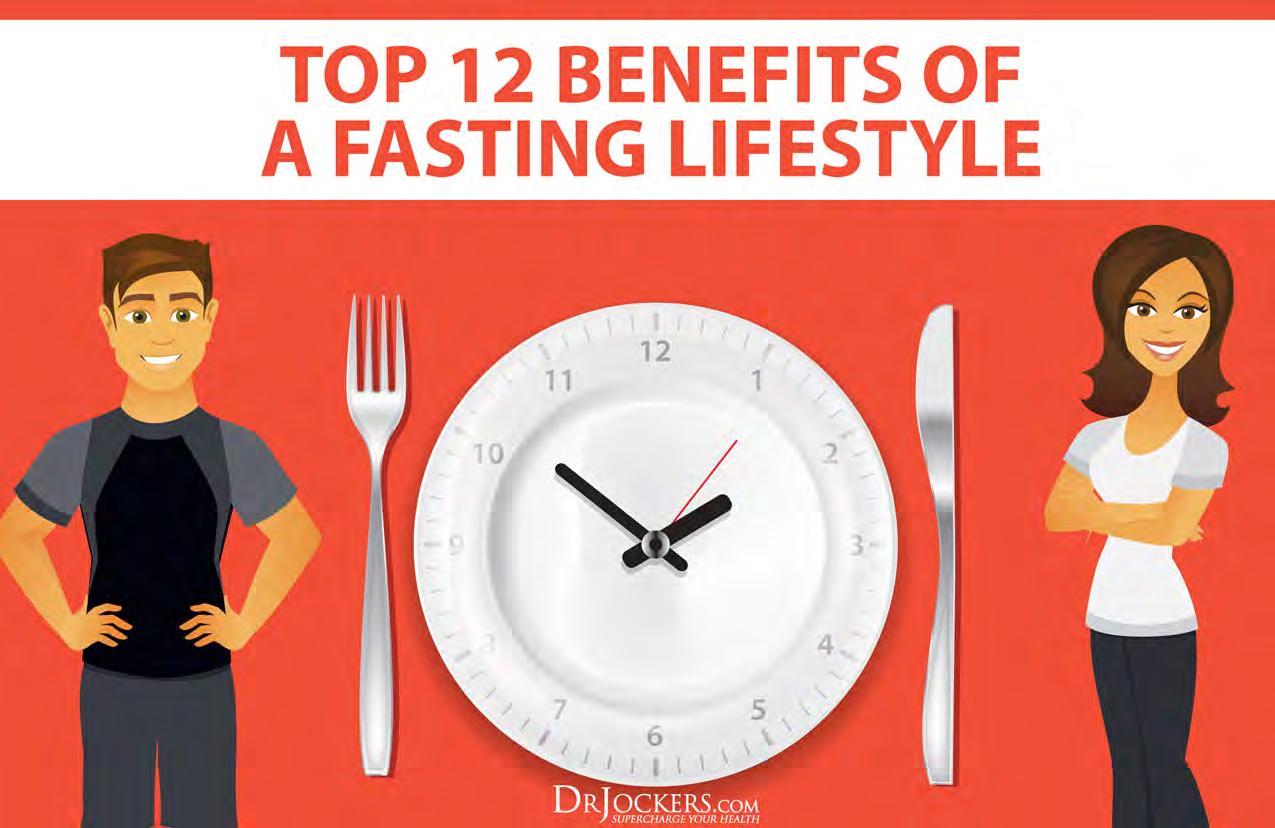

There are a number of benefits to fasting and reasons to apply it into your life. You may not experience all of these benefits the first time you fast. Fasting is like exercise, there is an adaptation that must take place before you really feel good.
I call this process, building your fasting muscle, because overtime you get stronger and more resilient to periods without food.
Typically, this will be 1-2 weeks of intermittent fasting before your body resets and your hunger hormones reduce and you adapt to your new eating schedule.


If you are trying out an extended fast beyond a day, the first time is usually the hardest and it typically gets easier with each successive fast unless you are under a lot stress.
Here is a short summary of the Top 12 Benefits of Fasting.






1. Stimulates Fat Burning: When you fast, your body needs to find an alternative fuel and it will first begin by burning up stored sugar called glycogen. As our glycogen stores go down, our body will begin burning fat for fuel and producing ketones.


2. Improved Energy Levels: When the body uses ketones for fuel and increases norepinephrine in response to the fast, you will notice more energy and mental clarity. This is all due to improved metabolic flexibility and energy efficiency.
3. Reduces Inflammation: Fasting has been shown in numerous studies to reduce the activity of inflammatory inducing gene pathways in the body and the number of inflammatory cytokines produced in the body.
4. Takes Stress Off of the Digestive System: Digestion is a very stressful and energy demanding process that our body must undergo whenever we eat. By fasting, we take stress off of the gut and allow it to heal and repair itself. Fasting and liquid nutrition are key strategies to help heal intestinal permeability, otherwise called leaky gut syndrome.
Additionally, when we fast we are able to divert the energy that would normally go into digesting our meal towards healing and repairing the immune system, our joint tissue, brain cells and other regions of the body.


6. Improves Genetic Repair Mechanisms: Research has shown that cells have a greater lifespan during times of famine and food scarcity. Fasting enhances cellular rejuvenation by acting on certain genetic repair mechanisms. We use less energy to repair a cell than to divide and create new cells. The main hormone responsible for this improved repair mechanism is human growth hormone (HGH), which goes up significantly as the length of the fast increases. 1 2 3 5 4 6
5. Stimulates Cellular Autophagy: Autophagy is part of the innate immune system, where the body breaks down old, damaged parts of cells and abnormally developing cells to recycle for energy. It then will use these raw materials to build new and healthier cells or to repair damaged organelles within the cells.






7 9 8 10
7. Stimulation of Stem Cells: Fasting has been shown to increase stem cell activity, giving our body very youthful cells that can provide a wide variety of benefits. Many people inject stem cells to help repair damaged joints. Fasting is a way to internally stimulate these stem cells to repair damaged areas of our body.


8. Improves Insulin Sensitivity: Insulin is a hormone that is responsible for putting sugar into cells and stimulating glycolysis and lipogenesis. These terms mean burning sugar for fuel and increasing fat storage.
In addition, high insulin levels from frequent feeding and high carbohydrate foods, stimulate inflammatory gene pathways. Fasting improves the use of insulin, so we need less of it when we consume food and therefore, we have less fat storage and inflammation.
9. Reduces Chronic Disease Risk: All chronic diseases are diseases that are characterized by chronic inflammation. Fasting is the most powerful nutritional strategy to reduce inflammation in the body.
When we reduce inflammatory levels, we influence our genes to express better health for all the systems, tissues and cells of the body. In so doing, we greatly reduce our risk of chronic disease and improve the condition of someone who is already dealing with a chronic disease.


Improved Relationship with Food: Most of us have caught ourselves eating mindlessly and have struggled with sugar, carb, dairy and other cravings. Fasting helps us to realize that these cravings are mental and emotional and can be overcome. Fasting also helps us to be more grateful and present with the food we do consume.






As ketones elevate in the body, most people experience improved mood, mental clarity and creativity. Many people observe that they feel the most productive at the peak of their intermittent fast or after 3-4 days of extended fasting.
Fasting has also been used throughout history as a way to elevate consciousness and experience a deeper relationship with our creator.


Additionally, fasting can help us tune out emotional urges and tune into our intuition which helps us make better decisions in life.
For Christians like myself, we will use the term Holy Spirit to describe this inner voice of truth that guides us in our life. Many people, including myself, find that fasting helps us hear from the Holy Spirit and have clearer communication with God.


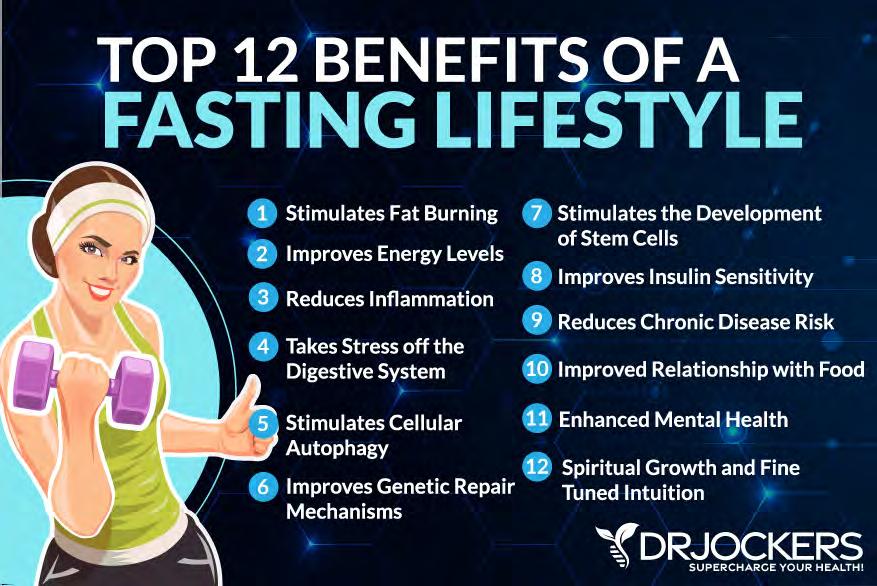






There are many fasting strategies one could try. These include intermittent fasting, where you go anywhere from 12-36 hours without food. This is something you can apply every day, or periodically throughout the week.
With fasting we have what we call our feeding and fasting periods. Some other terms that are used for this are “building window” and our “cleansing window” to help understand what the body is doing during these times.


These terms are defined as follows:
Feeding or Building Window: The time between our first meal and our last meal. When we take in nutrients, we stimulate building mechanisms in the body that are led by the hormone insulin.
Fasting or Cleansing Window: The time between our last meal of the day and the first meal the next day. When we are going without food, we have a post-absorptive period of 3-5 hours and then our insulin levels go down and our HGH levels go up, which begins to stimulate the process of cellular cleansing and repair.


Example: If you ate between 12pm and 8pm and then fast until 12pm the next day, then you would have an 8-hour building/feeding window and a 16-hour fasting/cleansing window.










During your building window, be sure to eat until you are fully satiated. Don’t try to under eat. The goal is to eat well when you eat, most likely you will consume larger meals than if you were to eat 3-5 meals per day and this is expected.
To help people begin to implement intermittent fasting in a non-intimidating way, I have broken the fasting strategy into 6 different forms. You can pick one that you feel good with and stick with it, or you can try to change it up and challenge yourself with a deeper fast from time to time.

Having some sort of a consistent pattern with intermittent fasting is the best way to develop the metabolic flexibility and energy efficiency that strengthen our bodies internal resistance.
If you have never done an intermittent fast before, begin with the simple fast and stick with it for a while until you feel that it is simple. Be sure to drink 8-16oz of water (as a minimum) when you first wake up to help reduce morning hunger, prolong the fast and improve the cleansing process.
Basic fast with water only for 12 hours between dinner and breakfast which gives the liver a chance to complete its cycle. Additionally, I recommend only eating 3 meals and not snacking on the simple fast lifestyle.
Example: Finish dinner at 7pm and don’t eat again until 7am











This is really the best way to start. Everyone (other than pregnant women and infants) should be able to do a simple fast. This is the first goal to get into a regular pattern of simple fasting.

This is where you do a 14 hour fast between dinner and breakfast. It is called the brunch fast because you are going to eat your breakfast a bit later than most.
Example: Finish dinner at 7pm and don’t eat again until 9am.















Three times each week you fast for 14-16 hours by skipping either breakfast or dinner.
Example: Finish dinner at 7pm and eat again around 9am-12pm at lunch the next day. Do this on Monday, Wednesday and Friday each week.




Consume all food in a 6-8 hour eating window each day. You would eat 2 meals per day and fast through either breakfast or dinner.
Example: This would mean fasting in the morning and eating between 12-7pm each day or 8am-3pm each day or whatever 6-8-hour period you like best.










Ancient warriors would often march all day and would feast at night. Consume all food in a 3-4 hour eating window each day.
Example: Consume 2 meals in a 3-4 hour eating window such as 2-6pm or 3-7pm, etc.





24 hours each week with only consuming water, black coffee or herbal tea. Many people will do this each week from dinner to dinner or lunch to lunch as an example.













If you are trying to lose a lot of weight or overcome a chronic health condition, you may also try a one-day 36 or 42 hour fast each week.
Example: Finish dinner on Saturday night at 7pm and don’t eat again until Monday morning or mid-day when you decide to break the fast.
















Another great intermittent fasting strategy is one meal a day or OMAD for short. There are many people who are practicing OMAD with great success. This is a very helpful lifestyle strategy for those with chronic inflammation and those looking to lose a lot of weight.
I recommend doing your best to consume your one meal around the same time each day as you will have an easier time complying with the plan.
Example: Only consume lunch or dinner each day.




Alternate day fasting is a popular intermittent fasting strategy that Dr Jason Fung has championed in some of his books including “The Obesity Code.” It seems daunting but it is a fairly easy strategy once you have built up your fasting muscle. You simply do a 24 hour fast every other day.
Example: The most common approach is to only eat dinner on Monday, Wednesday and Friday and then eat normally on Tuesday, Thursday, Saturday and Sunday.
Another approach with this, for those who are more dedicated is to not consume any meals at all on Monday, Wednesday and Friday and only eat on Tuesday, Thursday, Saturday and Sunday.

Another modification of this is a 4:3 where you fast 3 days out of the week and eat normally or practice an intermittent fasting strategy such as the strong fast on the other 4 days of the week.











This strategy was originally popularized by British journalist Michael Mosely and it includes doing 5 days of normal eating with 2 non-consecutive days where you only consume 500 -600 calories or less. There are many popular books out there using this approach.
Example: Have your low-calorie or full fasting days on Sunday and Wednesday each week and either practice an intermittent fasting strategy such as a strong fast or eat normally on the other 5 days of the week.












Extended water fasting beyond 2 days is an extremely powerful way to maximize ketone production, HGH, Autophagy and the stimulation of stem cells.
For most people, at 4-5 days you get the maximal rise of these benefits. Continuing the fast after this period can keep these benefits and may be beneficial for some people with chronic disease. Additionally, for those who are overweight, it can be good to continue the fast to lose more body fat.


At day 4, most people realize that their hunger and cravings are significantly reduced. Many say they no longer experience hunger, only an emotional desire to eat. This makes it so much easier to continue the fast.
For the average individual looking to optimize their biology and improve their self-healing, doing 1 longer fast every 6-12 months and applying a good intermittent fasting strategy on a daily/weekly basis is a great approach.
If you are dealing with a chronic inflammatory condition it is a great idea to do a 5-7-day water fast every quarter to regenerate the immune system. Within a year, your immune system can be entirely reset.
For those with severe inflammatory conditions and terminal diagnosis, many practitioners will use a 5-7+ day water fast every 4-6 weeks to help the body destroy the abnormal cells, stimulate stem cells and reset the entire immune system.












There are a wide variety of fasting approaches that include certain calorie sources in small amounts. These can be a helpful tool for someone new to fasting or someone who may not be ready for the challenges that come with doing an extended water fast or intermittent fast.
In general, as long as the calorie load is less than ¼ the amount you would consume in a day, than I consider it a fast.


Bone broth fasting is a very low-calorie fast that provides free amino acids and collagen proteins that support the gut, joints, skin and hair. It also has a lot of sodium and electrolytes to help the body adapt to the reduced insulin levels and maintain fluid volume.
Bone broth fasts are a great approach in which you will get much of the benefits that come with water fasting. However, you won’t get as much HGH, autophagy or stem cell production during a bone broth fast that you would with a water fast.
The main thing that blocks autophagy is protein, so if you are consuming more than 5 grams of protein in a day with the broth, you won’t get the big autophagy stimulus you would without the broth.









A green juice fast uses low-carb greens and fruits such as lemons and limes that are rich in nutrients but low in sugar and starch and overall calories.
The goal of a green juice fast is to load the body up with powerful cleansing and regenerative nutrients while keeping the blood sugar levels stable.
This can also be done with greens powders that are made up of a wide variety of dehydrated greens and algae like spirulina and chlorella.

This approach can be very helpful and will get much of the benefits of water fasting but will not reach the same peaks in HGH, autophagy and stem cell production. But it will add a lot of powerful nutrients to support the bodies cleansing process.





A fat fast is where you consume fats such as MCT oil, coconut oil, grass-fed butter or ghee but keep your protein and carbs to nearly 0. An example would be a fat fuel coffee that has these fats in it. This sort of fast helps the body to get keto adapted because there are highly ketogenic small and medium chain fats in these sources.

This can help the body deal with the challenges of the fast by getting in some calories and increasing ketones. The ketones help to reduce hunger and cravings and provide a great fuel source to keep the brain sharp.
The downside of this is that you will not get as much HGH or stem cell production. Because there is no protein in this, you should still get a tremendous amount of autophagy.

























A keto fast is where you use exogenous ketones (often mixed with MCT oil powder) on your fast for a very quick boost in ketones. This will give you much the same benefits as the fat fast but should work quicker and puts less stress on the digestive system since there aren’t any long-chain fats in these mixtures. In some cases, you can take in a small amount of amino acids with these mixtures to preserve lean body mass and maintain high levels of cellular autophagy.







The fasting mimicking diet (FMD) was created by Dr Valter Longo and in his research, animals and humans have seen fantastic results.
This program is a calorie restricted diet of 800-1100 calories for 5 days. The diet is a very low protein, very low carb, high fat, plant based ketogenic nutrition plan. This is above what I said “counts” as a fast, but the results are fantastic nonetheless. Research shows that you will have significant autophagy take place as you are restricting protein, carbs and calories for 5 full days. The research coming out on FMD should give us all and especially those who are intimidated with the idea of water fasting a lot of hope.









When you begin your fast it is important to make sure your blood sugar is stable and you want to focus on hydration during your cleansing window. I recommend drinking at least 8-16oz of water in the first 15 minutes of waking.

Over time you will have a natural craving for more water in the mornings and will easily drink 32-48 oz (at a minimum) of water in the first few hours of waking.

I drink one full gallon of clean water (as herbal tea, organic broth, with added lemon or apple cider vinegar, etc) before 12pm every day. It gives me incredible energy, takes away hunger and helps me to move my bowels a few times to fully get rid of the wastes from the day before.
Here are a few conditions that may struggle with longer fasting periods.
Adrenal Fatigue/HPAAxis Dysfunction: When an individual is not able to produce enough stress hormone due to hypothalamic-pituitary-adrenal axis dysfunction (also called adrenal fatigue), they can feel fatigued and inflamed as they fast.
These individuals need to focus on hydration and electrolytes. They also need to practice deep breathing, grounding their body with bare feet on the Earth and keeping overall stress levels down. It is best for these individuals to only begin with a 12-hour simple fast, stay well hydrated, use extra minerals and electrolytes and focus on keeping stress levels down during the fasting period.
Constipation: If bowels are not moving, it will create a toxic build-up that will drive an increased stress response in the body. This itself can lead to HPAAxis dysfunction or be a byproduct of it. These individuals will need to focus on lots of magnesium and hydration.
I have constipated individuals drink more than one ounce of water per pound of body weight and add about 1/2 tsp of Himalayan salts per gallon of water. I also have them consume lots of good fibers and often will use L-glutamine, smooth move teas, aloe vera and other herbs to help them get going.









Here are some key strategies to consider when fasting. I personally use and recommend all of these strategies for successfully doing Intermittent fasting.

Super Hydration: Drink as much clean water, herbal teas, etc as possible. The hydration will help reduce stress hormones and stimulate bowel motility. As I discussed above, drinking 8-16oz immediately upon arising and then continuously hydrating your body throughout your cleansing phase will reduce hunger, stabilize adrenals and keep your bowels moving appropriately.
At the times of day that your body is used to consuming food, it is normal to feel hungry. The hunger hormone ghrelin is secreted when the stomach is empty and when we are used to eating. Drinking 8-16+oz of water at these times will help to suppress and reset ghrelin levels and save off the hunger.
Minerals: We need minerals in order to produce electrochemical energy and we need them in order to produce adrenal hormones. When fasting or on a low-carb diet, we actually excrete sodium, so it is SO VITAL to replace this.
I recommend adding some Himalayan sea salt to your water. You can also use organic broths, green juices or greens powders, etc. during the cleansing phase in order to ensure adequate mineral intake.
Magnesium supplementation: The body uses magnesium much like a car uses oil. We need magnesium for over 300 vital functions. Magnesium is also very key for calming the adrenals and improving bowel motility.
Using a good magnesium citrate, glycinate, malate or threonate supplement can help you function much better during a fast. I recommend our Brain Calm Magnesium here


Probiotics: Probiotic supplementation can help to improve bowel tone and reduce gut induced inflammation that would trigger the adrenals.






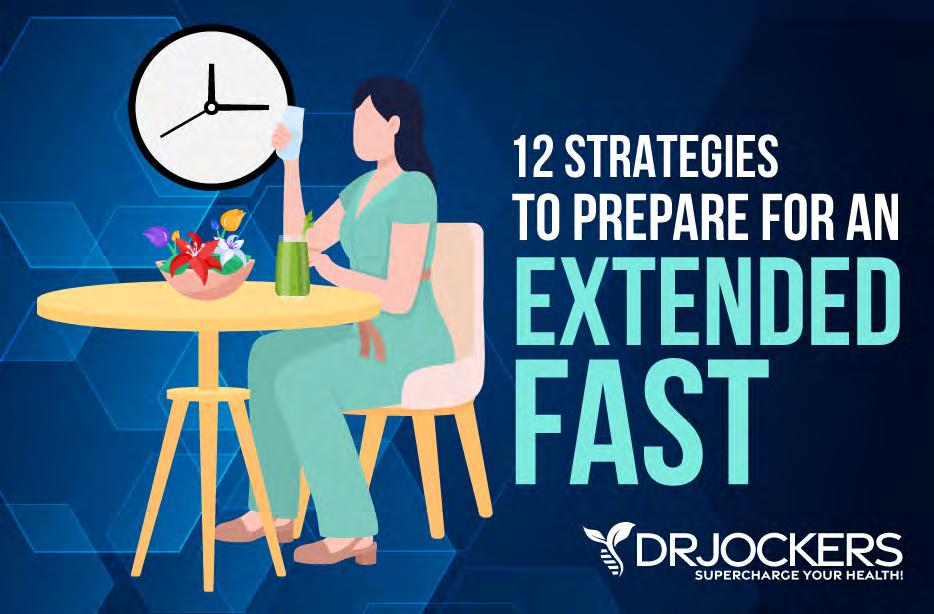
It is important to prepare your body well for an extended fast. I typically recommend doing a ketogenic diet and intermittent fasting for at least 2-3 weeks before beginning an extended fast as it will put the body into a fat burning mode and make it significantly easier to do a longer fast.
It is important to always remember that fasting is a muscle. The more we train our body responsibly to fast, the stronger we become and successive fasts become easier and more comfortable. A ketogenic approach mimics fasting, so it is a great step to help build your fasting muscles.

Additionally, here are a number of preparation steps that will support you on your fasting journey!







1. Create a Low Stress Schedule: A high level of stress is the biggest thing that derails people from having success on a fast. Schedule yourself very light so you have plenty of time to rest throughout the fast.
2. Do Your Best to Avoid Negative People: Some people in our lives are highly encouraging and empowering while others tend to be negative and drag us down. If at all possible, do your best to distance yourself from negative people during the fast.

3. Get Plenty of Filtered Water: You want to have a lot of good clean water available. I recommend systems like the iSpring or the Berkey system for low-cost filtration so you have easy access to clean water in your home.

The best water is the UltraLux Triple Action Hydrogen Water Machine which is what I use at home as it is powered by molecular hydrogen which reduces oxidative stress in the body and improves immune function.
If this isn’t an option, getting some bottled Fiji water from your local grocery store is another option you can apply. It is best to have your own water system and drink of glasses and mason jars to reduce your exposure to plastics.
4. Have Some Good SaltsAvailable: You will need some electrolytes along the way and I am a fan of using a good quality salt such as Redmond’s Real Salt, Himalayan Sea Salt or Celtic Sea salt is a great idea.
If you feel tired or dizzy during the fast, take a pinch of the salt and put it on your tongue and drink 4-8 oz of water. Most people notice a change in energy and mental function right away.
5. Schedule a Spa Day: You will be saving money by not eating food, so I recommend reinvesting that into yourself. Taking a spa day or multiple spa days and getting a massage, going in the sauna, etc. can really help you reduce stress, detoxify your body and make the fasting process more comfortable and enjoyable.


6. Avoid the Kitchen if Possible: Many people struggle with food cravings every time they go into the kitchen, so I recommend they do their best to avoid the kitchen if possible. This is especially important the first time or two that you fast. After a while, you develop a mental resilience that helps you to overcome this urge much easier.






If you cannot avoid the kitchen, then make a nice herbal tea or get some water available and be sure to drink while preparing the food. The water will help you reduce hunger and cravings and desires to eat.
7. Drink Strategically: You will typically feel hungrier around the times of day you normally eat. This is a normal and natural hormonal process where your hunger hormone, ghrelin increases to stimulate eating. Drinking water helps to reduce ghrelin levels and reduce hunger. You can also try doing herbal teas such as green tea or chamomile.


8. Try a Sweet Drink: If you are feeling really depressed and deprived on your water fast, try making a calorie free lemonade by adding some organic lemon juice and liquid stevia to water. This can give you a sweet kick that boosts up some feel-good neurotransmitters and can make the fast much easier and more enjoyable.
9. Get Grounded Daily: If at all possible, getting outside and putting your bare feet on grass, dirt or sand can be especially helpful. There is a healthy electromagnetic frequency and negative ions that act as anti-oxidants that come from the Earth. Rubber soles in traditional shoes block us from absorbing this.
By going out barefoot or in socks and getting on the Earth, you will ground your body’s own electromagnetic current and experience improved energy, mental clarity and relaxation.
Get Sunshine Each Day if Possible: Getting as much of your body in the sun as possible is extremely beneficial. Don’t burn your skin, but getting a bit of a suntan will help stimulate vitamin D and enhance your fat burning physiology to get into ketosis faster.
In addition, sunshine has powerful biophotons that help to reduce stress hormones and stimulate the production of feel good neurotransmitters that will improve your fasting experience.


Move Your Body: Going out and taking walks throughout the day can be very helpful. Walking naturally stimulates circulation and lymphatic movement and boosts up feel good neurotransmitters.






It is best if you are able to walk in nature (such as at a park or in the woods) to be around the healthy EMF’s from the natural world. If you are unable to do that or the weather doesn’t permit you to get outside, then walk around your home a few times, up and down stairs or get on a treadmill, elliptical or stationary bike. The goal is not to burn calories or get a great burn…it is simply a relaxation walk to move your body at a comfortable pace.

Give Yourself Permission to Rest: In our society, we are always on the go and we get addicted to productivity. During a fast, it is a great time to disconnect from this way of life and give yourself time to rest, take naps, take a warm bath, diffuse some essential oils and just relax.

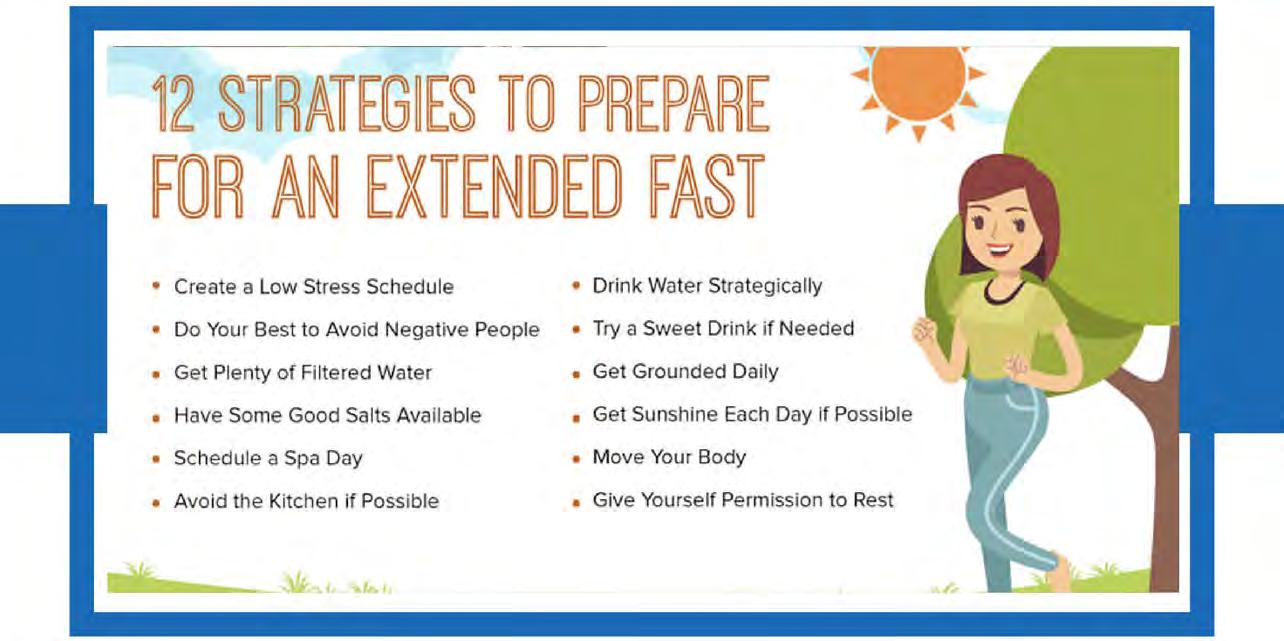



When you go on an extended fast, a number of changes occur in the body. One of these things that is important to consider is that the digestive system completely shuts down. If you break your extended fast with a large meal, it can be quite stressful on the body.
Breaking an extended fast should be gentle and gradual. The following is what I would recommend following a 3-5 day (or longer) fast:






• Consume only broths, soups, and fermented drinks for the first 1-3 days after breaking your fast. Bone broth can be especially great for providing lots of gut healing nutrients to support the important mucosal barrier.
• For another 1-3 days, consume low-carb smoothies and light meals
• Finally, begin to incorporate more solid food meals including healthy fats, lightly cooked vegetables, and small amounts of clean protein


While it is pretty straight forward, it can be tempting to break an extended fast with a massive meal full of all your favorite foods. Resist this temptation, your body will thank you!
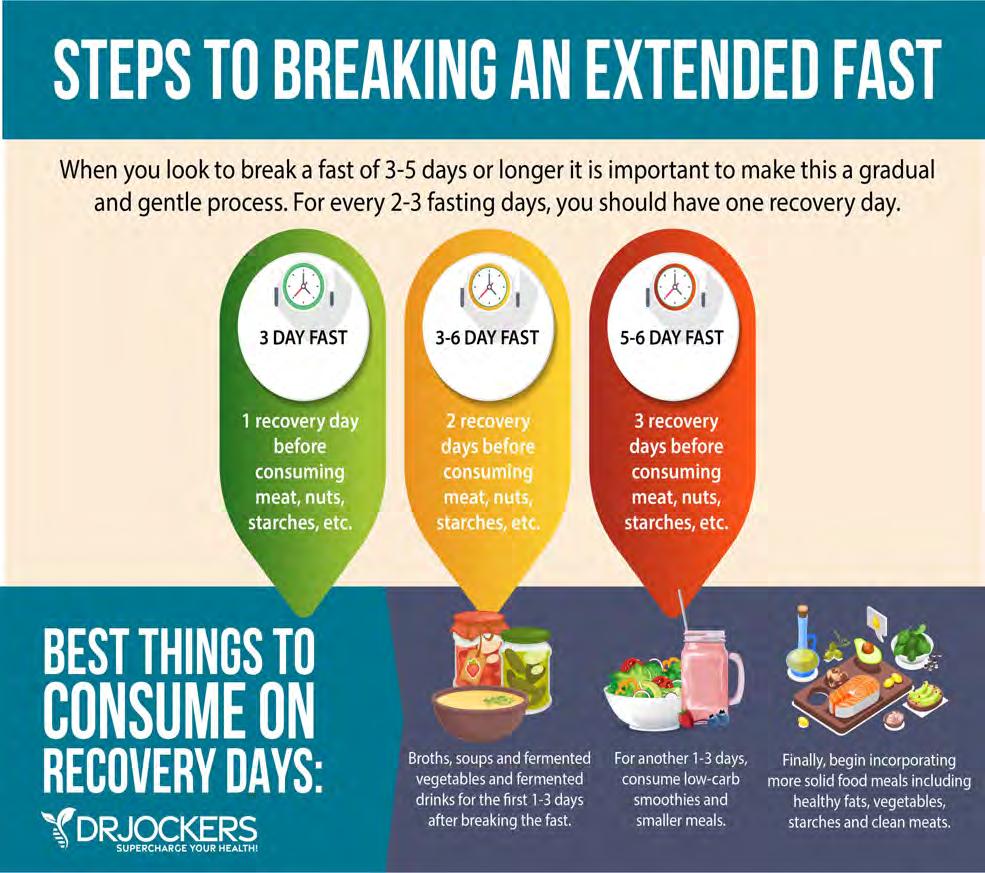











Intermittent and extended fasting are healing strategies that have been used throughout history and have become popular in many health circles today. Many individuals struggle with various symptoms as they begin fasting and certain supplements can help negate these issues.
While our ancestors practiced therapeutic fasting without any fasting supplements with great success, it doesn’t mean we cannot take advantage of these technological advancements.


I don’t believe or advocate the use of fasting supplements in all cases. However, I have found they are especially helpful for individuals who are either new to fasting or are struggling with serious metabolic dysfunction and chronic disease. This is because the purpose of fasting supplements is to provide a more comfortable and effective fasting experience.






The biggest goal for me is get my clients and the individuals I influence to have a good fasting experience because this will motivate them to adopt a fasting lifestyle.
I have found that using fasting supplements can be a big player in providing that experience and empowering people to get tremendous health breakthroughs on a fasting lifestyle.

When you are fasting, the body has to make a number of metabolic adaptations and this is where most of the symptoms occur. Our blood sugar drops and we may not be adapted to using our own endogenous ketone production for energy. This can lead us to feeling tired, weak, experiencing headaches, cravings, mood changes and nausea.

Additionally, many of these same symptoms and others like heart palpitations, leg cramps and anxiety can be related to low electrolyte levels and possibly dehydration. We naturally lose key electrolytes such as sodium when we fast due to the lowered insulin levels. I always recommend adding in good salts such as Redmond’s real salt and just take a pinch every few hours to keep your electrolyte levels up.
We can also experience symptoms that are associated with disruption in our gut microbiome. As we starve out the microorganisms, many of them die off and release endotoxins. Endotoxins are toxic metabolites produced within our body or released from cells within our body. If these endotoxins are not moved through our drainage pathways, they can cause inflammation that impacts other areas of the body.
Finally, the body stores environmental toxins in our fat cells. As we fast, we use the fat stores for energy and release these toxins into circulation. Having binders and powerful antioxidants on board can help the body to get rid of these toxins with minimal stress on the body.



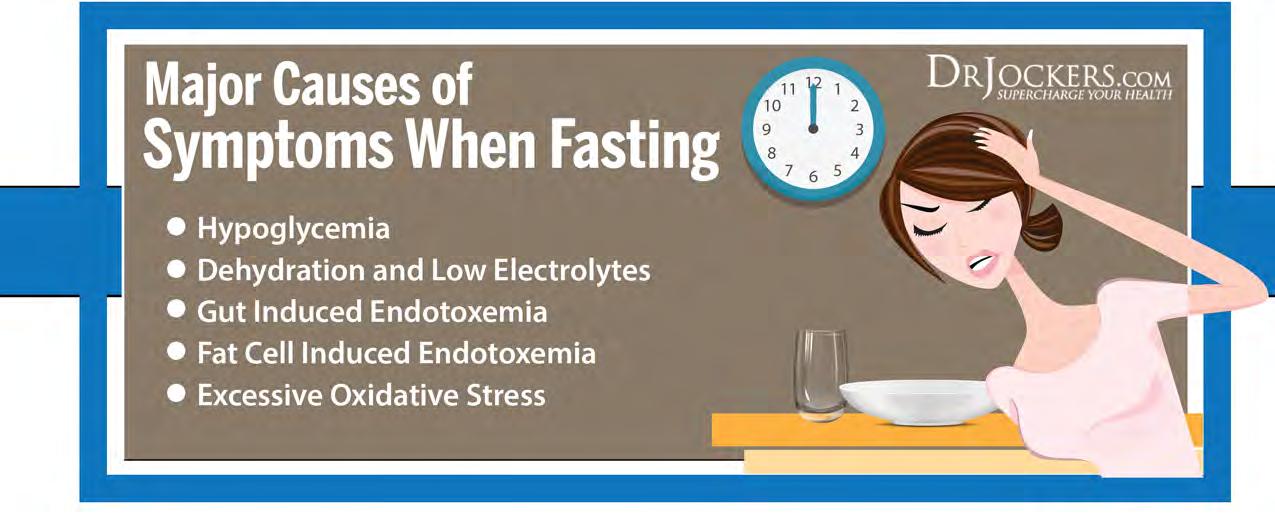


Hypoglycemic responses are a normal part of fasting and for the most part, should be expected. The brain can use both glucose and ketones for fuel but until it has adapted to using ketones it views a lower blood sugar level as a potentially fatal problem.

The main issue with hypoglycemia is brain cell death due to lack of cellular energy production and excessive oxidative stress. This can lead to dizziness, fatigue, brain fog, headaches, mood changes, anxiety, cravings and insomnia.
Some have more extreme hypoglycemic responses than others and the more keto adapted and metabolically flexible you are before beginning your fast, the better you will feel as you through the fast.
When someone is struggling or is concerned about struggling with hypoglycemic issues when fasting, I will use two or three major supplements. These include adaptogenic herbs or mushrooms, exogenous ketones and magnesium.









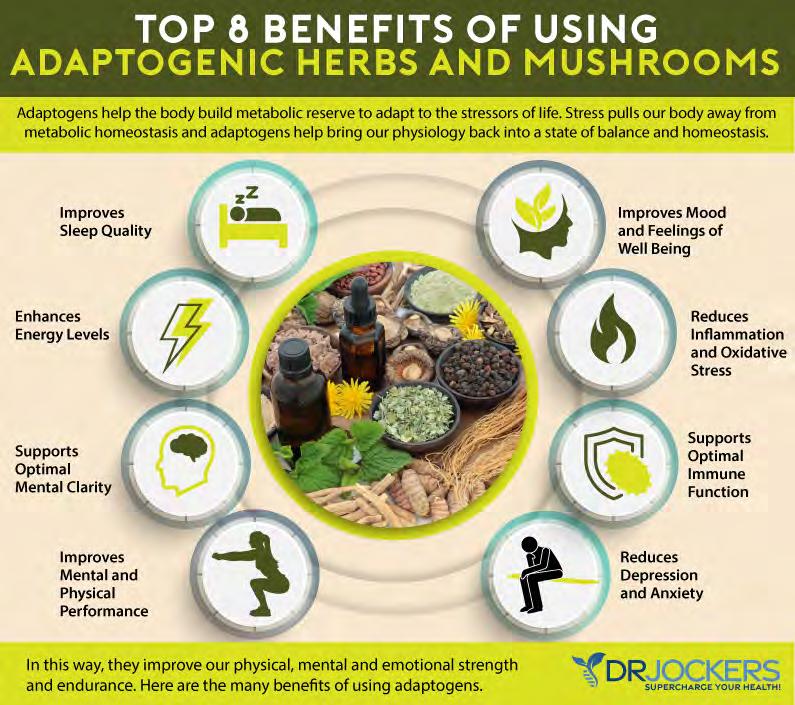

Exogenous ketones mimic the body’s own production of ketones and can be used to help teach the body to adapt to using ketones as a fuel source quicker. The body has to see ketones in the system for a period of time before it becomes efficient at using them as an energy source.


By providing ketones to the body, we have an immediate fuel source to flood the brain cells so they can produce the energy they need to function optimally. In addition, ketones have been shown to down regulate the neuro inflammation and enhance brain derived neurotropic growth factors (BDNF) for sharper cognition.










Magnesium is one of the most abundant minerals in the body and is used in over 300 different physiological processes. When we are under stress, such as when we are fasting and our blood sugar drops, we use up more magnesium.
Magnesium Deficiency symptoms are almost identical to hypoglycemic symptoms and there is often a cross over between them. The hypoglycemia experience is much worse when we are also deficient in magnesium.


If you are experiencing hypoglycemic symptoms, taking in extra magnesium can be extremely helpful. Ionic magnesium is great but it needs a carrier to get into the blood stream. That carrier can be as a ketone salt from an exogenous ketone or from a chelated amino acid form.






Certain forms of chelated magnesium are better than others. Some great forms to use include magnesium malate, citrate, glycinate, orotate or taurate. The best form for crossing the blood brain barrier and improving neurological adaption to stress and hypoglycemia is magnesium L-threonate in a form called Magtein.


We have the Magtein in our Brain Calm Magnesium along with magnesium glycinate which is great for reducing muscle cramping and improving energy levels during the day. These magnesium products also help to keep the bowels moving well which can be a major issue while fasting.
When your bowels slow down…it increases the amount of microbiome related endotoxic damage. For individuals with constipation, I will have them dose up on magnesium until they either have consistent bowel movements or have loose stools. If you experience loose stools, we back off of the magnesium until they regulate and then find a dosage that keeps things moving with good bowel form.

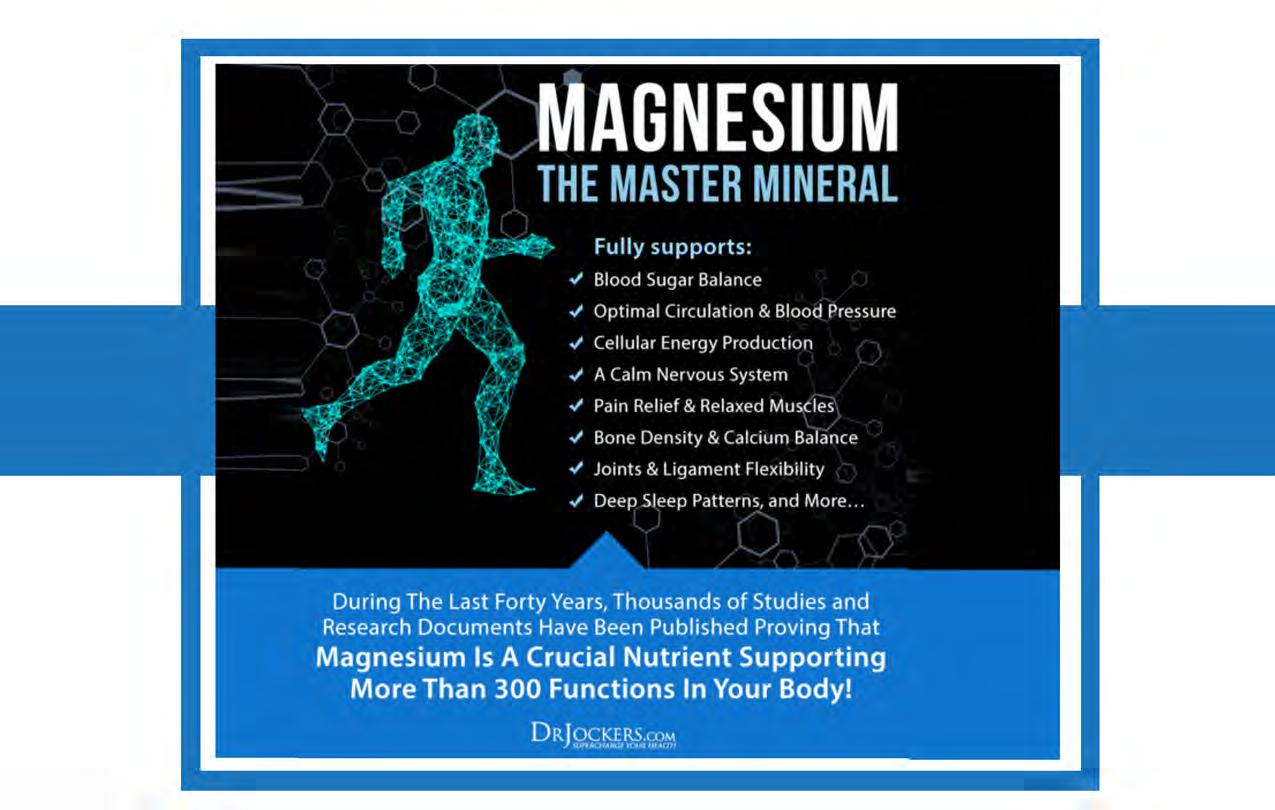








Your gut microbiome is the collection of trillions of various microorganisms in your digestive system. This includes different forms of bacteria, yeast, amoeba, viruses, etc. When the microbiome has good balance, it helps to reduce toxins in the body and produce B vitamins and other nutrients necessary for the formation of cellular energy.
However, when the biome is out of balance, certain organisms when they are overgrown will steal valu-able nutrients from our diet and release toxic metabolites that damage the body. Unfortunately, most people in society have very poor balance in their microbiome and it is a key player in the symptoms and disease processes they are experiencing.
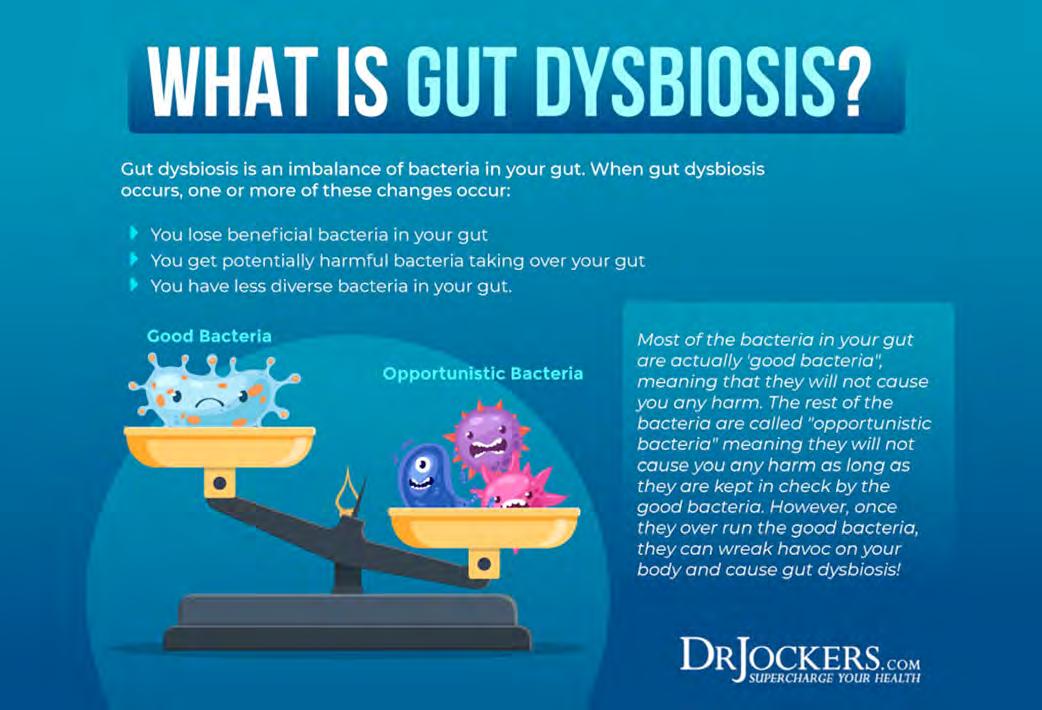


Fasting is a way of reshaping the microbiome and in so doing it helps to reduce both good and bad microbial organisms. Overall, this tends to have a very positive effect on the individual’s health. This is because we live in a world where we have unlimited supply of food and our frequent eating habits favor an overgrowth of the microbiome. This overgrowth of both good and bad organisms puts tension on our immune system and drainage pathways (4). This tension is termed, the “microbial load.” Intermittent fasting and periodic extended fasting helps to reduce this microbial load to a healthy level.
Most people don’t understand how the microbiome works and they believe that the goal is to constantly bring in more healthy bacteria. Unfortunately, that idea alone can cause a lot more problems. The best way to view the microbiome is using the analogy of a grassy field. In order for it to be kept under control you need to regularly mow, cut and trim the grass. Otherwise it grows out of control. Fasting is a great way to mow the lawn and reduce the overall microbial load in the body. This helps to take stress off of the immune system and allows our body to have better immune balance and lower levels of inflammation.


One reason why a high microbial load can be a major problem is that microbes produce compounds that can trigger inflammation (5). Pathogenic microbes produce much more of these hazardous compounds but even good microbes produce low levels of them. As we fast, the microbes die-off and we can get a larger release of these compounds in a short period of time. For some individuals, symptoms such as skin rashes, headaches, increased body odor, brain fog and fatigue can occur.
I personally notice this when I don’t move my bowels well early into a fast. The better I move my bowels when I am intermittent fasting and at least the first 2 days of an extended fast, the better I feel. The challenge here is that the act of chewing and eating itself helps to stimulate the peristaltic or muscle activity of the bowels. When you are fasting, you get reduced peristaltic activity in the gut. Certain fasting supplements can be extremely helpful to get things moving well.
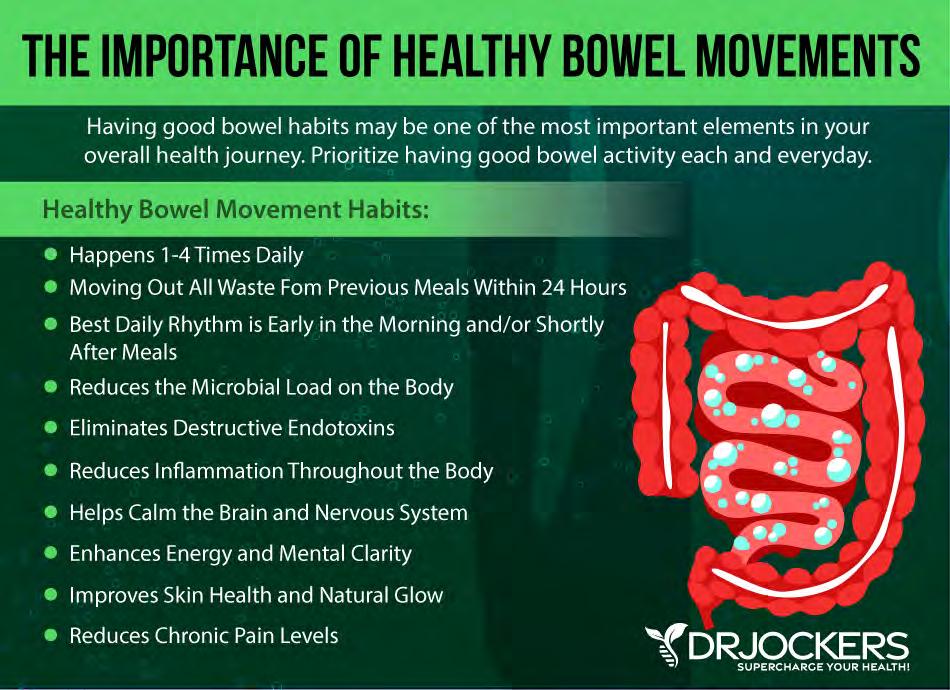

The fasting supplements that can help reduce gut mediated endotoxins include things to help facilitate bowel movements and binders to grab up any sort of endotoxins in the gut and in circulation.
My favorite supplements for this include either an herbal based colon cleanser such as our Intestinal Mover or a non-herbal oxygen-based colon cleanser called Oxy-Powder. Both will work and I tend to slightly favor the Oxy-Powder during the fast as some individuals may have a sensitivity to one or more of the herbs in the Intestinal Mover. For binding the endotoxins, several things will work. You can do traditional binders such as activated charcoal, Diatomaceous Earth or Bentonite clay. These binders are great at grabbing things in the gut but they won’t impact endotoxins that are making their way into circulation.
For individuals who have more problems with endotoxins in circulation, I recommend BioActive Carbon BioTox which is a unique formulation with fulvic and humic compounds that help bind in both the gut, in circulation and even go into cells to grab toxic debris.
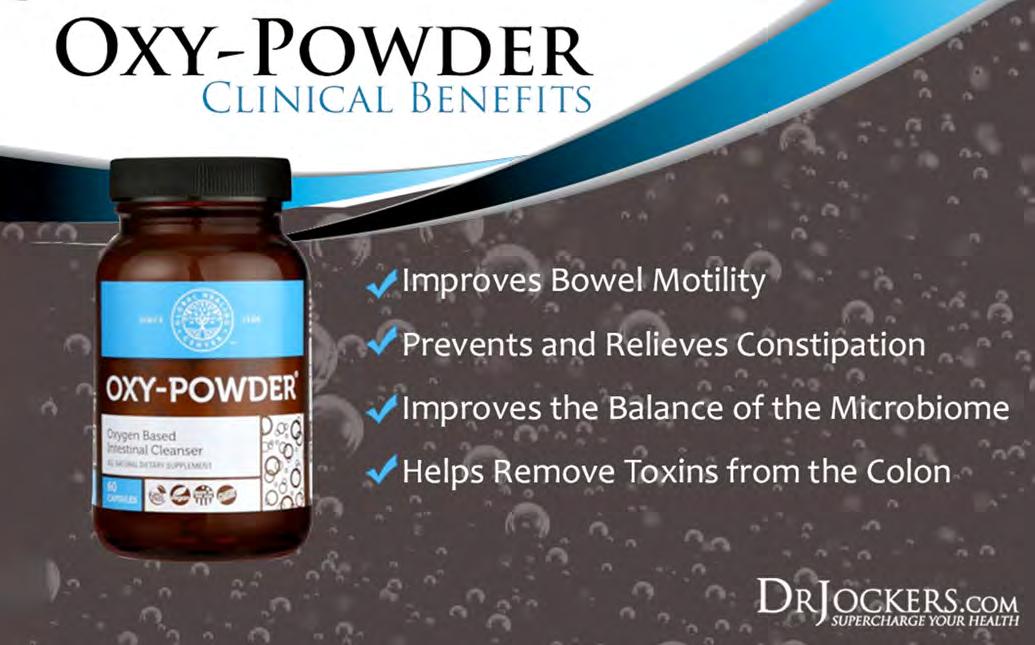

When our bodies are unable to eliminate toxins, they end up storing them in our fat cells. This would include the various chemicals we take in from our air, water and food. If you are healthy, your body is eliminating a majority of them on a daily basis through our drainage pathways of respiration, perspiration, urination and defecation.
Unfortunately, many people have blocked up their drainage pathways due to poor lifestyle, chronic stress, nutrient deficiencies, etc. and have stored a large load of these toxins in their fat cells. When we fast, our insulin levels drop and we begin breaking down these fat cells to produce energy. As this is happening, we may liberate a high number of these chemicals. If our drainage pathways are already working slowly, than these fat cell derived endotoxins are going to cause some major damage resulting in a high degree of inflammation and oxidative stress. The three big things I like to use to reduce this is the BioActive Carbon BioTox which I discussed in the section above and the Super Glutathione which I discuss in more detail below.


Another product that can be especially helpful during fasting is molecular hydrogen. When the body has an increase in stress and toxicity, there is a major release of unpaired and unstable electrons that cause oxidation or rusting to the cells and tissues of the body.
Hydrogen is the smallest gas molecule to act as an antioxidant by donating an electron in order to stabilize the reckless free radical. Because of its tiny molecular size, hydrogen can penetrate into virtually every organ and cell in the body and quench the oxidation process without any negative side effects (6).
In particular, the strongest oxidative stress mediators include hydroxyl radicals (OH-) and peroxynitrate (ONOO-). These agents do their dirty work on the cell membrane, mitochondrial membrane and cause damage and mutation to DNA. Studies have shown that molecular hydrogen powerfully quenches these oxidative stress mediators and protects against cellular, mitochondrial and genetic damage (7, 8).
This is very important for highly toxic individuals as they can liberate a lot of chemicals from fat cells that are broken down while they fast. These toxic chemicals are highly reactive free radicals that have the potential to cause significant damage to the cells and tissues they collide with. If you are battling a chronic disease, I would highly encourage you to use molecular hydrogen on a regular basis. The good thing is you can get filtered water with infused molecular hydrogen so you can drink it rather than popping capsules.
My family and I use the UltraLux Triple Action Hydrogen Water Machine and this is what I regularly recommend to my patients, readers, and friends as well. It is the most advanced and highest quality counter top hydrogen water I’ve found on the market. It’s reliable and simple to use. It is not simply a hydrogen water system, but it also provides a good filtration system that creates clean, antiinflammatory, bioavailable, anti-allergy, neutral pH water with molecular hydrogen.
It filters out chlorine and other chemicals, pesticides, glyphosate, water-soluble metals, pharmaceutical drugs, algae, and bacteria. I highly recommend this product if you want to reduce inflammation, experience antioxidant support, boost cognition, improve your digestion, boost your metabolism, improve heart health, increase longevity, and simply feel better overall.


Glutathione (GSH) is a very special peptide molecule that provides the greatest antioxidant protection and recharges other antioxidants within the body (1). Every cell in the body produces glutathione. Many longevity scientists believe that the level of glutathione in our cells is predicative of how long we will live (2, 3, 4). This is logical considering the wealth of essential bodily processes that glutathione plays a critical role in. Glutathione has been coined with the term “master antioxidant” due to its essential role in maintaining exogenous antioxidants such as vitamin C & E in their active form (5, 6). Glutathione is like the cell’s security guard protecting the genetic equipment from outside attack. It is estimated that each cell in the body withstands 10,000 hits by free radicals each day. Glutathione disarms these free radicals before they wreak havoc and cleans up the oxidative stress related damage that has occurred.
For some individuals who have high levels of toxicity, they need to support glutathione levels in order to deactivate toxins and put them in position to be bound and eliminated by the body. For this reason I recommend taking a form of glutathione that bypasses the digestive tract and does not put any stress on the gut in order to get into the blood stream and into the cells. The Super Glutathione is an acetylated form of glutathione that works to detoxify at the cellular level.


Traditional fasting has been practiced since the beginning of mankind and has been used therapeutically for thousands of years. Our ancestors didn’t have access to key supplements to help them improve the comfortability and success of their fasting regimen.
In today’s culture, however, we regularly use technological advancements to improve our quality of life. None of us need these advancements, we can live our lives without automobiles or cell phones, but they offer us great advantages in our modern culture.
We should view fasting in the same light in that you can get fantastic benefits from fasting without any supplements. The purists may say that is “the only way to do a true fast.” However, my perspective is that taking fasting supplements to improve the fasting experience is a great tool to help many individuals.

As long as the supplements help to improve your experience with fasting than I would say that that is a fantastic thing. In addition, people are sick and have accumulated a tremendous allostatic or disease promoting load on their bodily systems.
Fasting strategies along with high quality supplementation in combination can be a synergistic punch to help build positive healing momentum in the body.
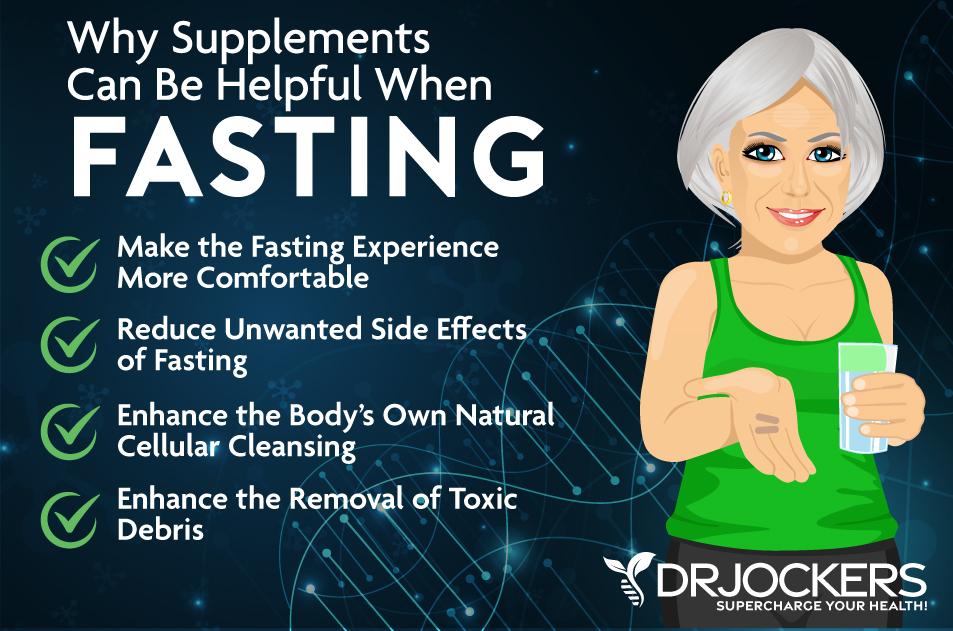

To try to simplify things, I have created 2 unique fasting support packs. The Fasting Stress Support pack includes the Organic Multi-Mushroom, Organic Ashwagandha and Brain Calm Magnesium. This is great for those who are new to fasting and individuals who struggle with high cortisol and hypoglycemia when they fast.
The recommendations for this are to take 1 cap of the Organic Multi Mushroom in the morning and mid-day in water and 1 cap of the Organic Ashwagandha in the mid-day and 1 cap in the evening to improve daytime energy and quality sleep at night.
The Brain Calm magnesium capsules should be taken with these other supplements with 1 cap in the morning, 1 at mid-day and 1 in the evening to support smooth energy and mental clarity during the day and good sleep at night on the fast. As an added bonus, the magnesium will also help with bowel motility.
We priced this pack out in order to provide over 15% savings off of the regular retail rate.


The Fasting Detox Support pack is designed to help individuals who struggle with endotoxemia induced inflammation on their fast. This includes Oxy-Powder, BioActive Carbon BioTox, and Super Glutathione.
This product pack is exceptional for helping improve bowel motility and colon cleansing while binding to endotoxin debris that is in circulation. The glutathione protects the cells, mitochondria and DNA from oxidative stress and supports the process of autophagy for optimal cellular cleansing.
We priced this pack out in order to provide over 15% savings off of the regular retail rate.



? Here is a list of FAQ that I get all the time when it comes to fasting. You have probably been thinking of these FAQ’s as you have been reading through this guide.

Yes, you can absolutely exercise while fasting. If you are fit and healthy, it can be a powerful stimulus to your nervous system and stimulate an increased level of autophagy and muscle building potential to do resistance training or burst training at the peak of your 12-24 hour intermittent fast. ‘
I personally do all of my workouts in a fasted state of 16-24 hours and feel amazing. I have been doing this for a while, so I have even worked out intensely before finishing 4-5day water fasts. However, I only recommend doing strength training or burst training on an extended fast with someone who has already successfully done several longer fasts.
If you have not been exercising on a regular basis, then it is a good idea to just focus on light movement throughout your fast. Take a few walks around your neighborhood or at a park. If it is cold outside, go up and down your stairs often or walk on a treadmill or ride a stationary bike.
Your goal is not to burn calories but to get moving as it is anti-inflammatory and improves circulation and dopamine/endorphin release which helps you to feel good! Since you aren’t eating food, you need to do other things to stimulate these feel-good neurotransmitters and movement or exercise can really help.
Fasting can often lead to an overall reduction in the number of calories your body needs as it gets more efficient with what you are providing.


The idea of counting calories is somewhat outdated in my opinion. Every individual is different and our calorie needs are different. Just because 2 people weigh the same amount and have the same level of activity, does not at all mean they will have the same calorie needs.






As we fast, we develop a greater degree of metabolic flexibility and energy efficiency and often our calorie demands to maintain our weight and muscle mass reduces.
The key is not to count your calories but instead to eat until you are satiated when you are eating. Eat good healthy foods until you are full and then stop eating for a period of time that works best for you based on what I discussed in the fasting strategies above.


This really depends upon your unique response to coffee. Many people feel better overall on a fast when they drink black coffee once or twice daily. I would not recommend more than 2 cups though as you don’t want to overstimulate yourself.
Some people feel anxious, have blood sugar imbalances and experience more cravings with coffee. These individuals should obviously not drink coffee on a fast. Try doing it on an intermittent fast and see how your respond before experimenting with it on an extended fast.
You can also test your blood sugar and ketones and if you see a rise in blood sugar more than 10 mg/dl and a drop in your ketones of more than 0.2 mmol 30-60 mins after drinking the coffee than it is negatively impacting your fat burning physiology.
I would always recommend consulting with your prescribing physician and functional health coach before beginning a fast if you are on medications.
While fasting is not a problem for many medications, it can be an issue with certain prescriptions such as diabetes medications and steroids.
The best advise I can give is begin with a simple fast, which should be fine for everyone, and be sure to consult with your prescribing physician and be sure you are medically supervised if you are looking to do a longer fast.








This really depends upon your health history and weight. Many people have fasted over 40 days without any issues.
As a doctor, I would not recommend fasting more than 7 days without the support and guidance of a functional health coach. If you have serious health issues, it is always best to discuss this with your doctor or functional health coach before beginning a fast.


It is normal and natural to have what we call “hunger waves,” during a fast. These typically come on the strongest around times when you would normally have a meal.
This is a normal and natural phenomenon with the hormone ghrelin leading the charge when the stomach is empty and the body is conditioned to consuming food at a certain time of day.
I recommend drinking 8-16 oz of water when you feel this come on and see if it goes away in a few minutes. Most people find that drinking when they feel a hunger wave is an excellent way to reduce it and make the fast more comfortable.
If you have an increase in symptoms that won’t go away with water, rest and salts than it is time to consider ending the fast to be safe. Some people will push themselves through and the symptoms go away over the next day, which is great.
However, if you are doing an unmedically supervised fast and you feel awful even after applying the strategies discussed in this guide, than I recommend ending the fast. There is NOTHING WRONG with ending the fast early if you are really uncomfortable.


Fasting is a lifestyle and even if you don’t accomplish your goal with one fast, you can do another fast-next week or a few weeks down the road. With each fast, your body will get stronger, healthier and more resilient and the experience most often gets easier.






Yes, fasting can be more challenging for older individuals in the beginning stages. This is because the body has accumulated more toxins, more damaged cells and more metabolic dysfunction over time.
All this really means is that it may take a little longer for these individuals to build up their fasting muscles and feel more comfortable doing intermittent or extended fasting.

It is still quite safe for older individuals to begin with the simple fast and work their way up in a great intermittent fasting lifestyle. I would recommend doing this until you can fairly comfortably do a 24-hour water fast before you plan out an extended fast.

When you fast, your body increases its HGH production which tells the body to preserve lean body mass. This is a survival mechanism as our ancient ancestors used to go long periods without food during seasons where they had a poor harvest or a series of poor hunting episodes.
During this time, they didn’t shrivel up and die, they stayed strong and increased their mental acuity in order to find food so their tribe would survive the famine.
When you do an intermittent fast such as a 16:8 or 18:6 or even a 24 hour fast, you will initially lose a bit of muscle volume but it is just glycogen and water being used, not the actual muscle tissue. As you get better at burning fat, you will preserve more glycogen and notice less of this. In fact, you will notice that you feel stronger exercising at the peak end of your fast.
Many bodybuilders practice intermittent fasting as they notice big increases in strength and muscle gains due to the elevated HGH production.
On an extended fast, you will break down muscle tissue, but it is the muscle tissue that is of the poorest quality. This is actually a good thing, as the body breaks this down it will then create better and healthier muscle tissue. Once you begin eating and training again, you will build higher quality muscle tissue.


Helpful Analogy: Fasting will help you trade in your old vehicle with 200K miles on it for a brand-new vehicle with all the latest gadgets.






In general, most young children have no problems at all doing a 12-14 hour fast overnight. Throughout history, it was common to fast children with chronic health conditions to help them get well. However, it is not an accepted practice in most westernized countries now.
If you would like your child to fast beyond 14-16 hours on daily basis, be sure to work with a trained health care practitioner to customize the right plan.


Legally, I can only advocate intermittent fasting for healthy adults over the age of 18. So, doing any fasting with a child is experimental and must be done with a trained doctor or health coaches’guidance.
Many nursing mothers have no problems with fasting and don’t see a reduction in breast milk production. However, there are women who have trouble producing enough breast milk and these women need to be very careful.
This is because fasting tells the body we are in a time of famine. When you are in a time of famine, your body conserves energy and may decrease the production of breast milk.
If the nursing mother were too fast and began seeing a marked reduction in breast milk production than I would recommend sticking with a simple 12 hour fast to get breast milk production back up.
Some people that have gallstones, have pain during a fast and after they break the fast with a meal. I recommend these individuals consume a lot of lemon water, extra magnesium and activated charcoal to help loosen up the bile ducts, thin out the bile and bind to the bile stones and remove them from the body.










Dr. David Jockers is a doctor of natural medicine, a functional nutritionist and corrective care chiropractor. He runs one of the hottest natural health websites in DrJockers.com which has gotten over 1 million monthly visitors and his work has been seen on popular media such as the Dr Oz show and Hallmark Home and Family.
Dr Jockers is the author of the best-selling book “The Keto Metabolic Breakthrough” by Victory Belt publishing and is a world-renowned expert in the area of ketosis, fasting and the ketogenic diet. He is also the host of the popular Dr Jockers Functional Nutrition podcast.
Dr Jockers lives in Canton, Georgia with his wife Angel and his twin boys David & Joshua and his daughters Joyful and Shine.







